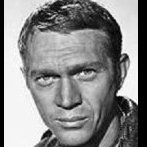The Discovery Of Kapilavastu Ii
-
Recently Browsing 0 members
- No registered users viewing this page.
-
Topics
-
-
Popular Contributors
-
-
Latest posts...
-
227
My wife wanted me to sign a document any money she gets is hers!
I've noticed that a few members seem to have joined Team Wind Up ! Guess those cooking threads and IT threads are not arousing much interest . I can't reveal too much because the Team captains hate me for calling things out. Maybe I got some brownie points today for participating in an ego slugfest on this thread with a serial narcissist . I gotta admit.... it was pretty exhilarating ! Can't wait till tomorrow ! hahahaaha ( due to mental restraints, i must now put a warning on my posts that there may be sarcasm inside ) -
51
Report Violent Outburst on Bangkok-Chiang Mai Train Sparks Outrage
Nice trip report. I obviously had it easy 😄 -
8
THAILAND LIVE Thailand Live Saturday 7 June 2025
Search Underway for Missing 74-Year-Old Man with Diabetes Who Disappeared Picture courtesy of Workpoint. A 74-year-old man suffering from diabetes and high blood pressure has been missing for two days after venturing alone into the forested hills near his home to gather wood for making tool handles. Full story:https://aseannow.com/topic/1362924-search-underway-for-missing-74-year-old-man-with-diabetes-who-disappeared/ -
209
Recent trip to UK with Qatar air- A very sad, heartbreaking visit.
Err, if you pre-pay for it with your taxes, how can you call it free?! "Pre-paid", perhaps? -
0
Community Search Underway for Missing 74-Year-Old Man with Diabetes Who Disappeared
Picture courtesy of Workpoint. A 74-year-old man suffering from diabetes and high blood pressure has been missing for two days after venturing alone into the forested hills near his home to gather wood for making tool handles. Mr Chit, a resident of Ban Nong Pao Pi village in Sam Roi Yot district, Prachuap Khiri Khan, left home on the morning of 4 June to climb Huai Ta Chit Hill in Kui Buri National Park. He had reportedly gone to cut maha phrom wood, which he regularly uses to craft hoe handles for sale. According to his family, he usually returns home by evening, but on this occasion, he failed to do so. The disappearance triggered a large-scale search involving over 50 individuals, including park rangers, local officials, police officers from Sam Roi Yot Police Station, village leaders, volunteers, rescue personnel from Sawang Methee Thammasathan Foundation, and concerned villagers. The initial search found a cloth shoulder bag belonging to Mr Chit on the ground. Inside were food items including rice, bottled water, bread and snacks. Fearing he might return to the location, the bag was left untouched. Search teams then swept the surrounding area for several hours but were unable to locate him and had to call off efforts temporarily due to nightfall. The following day, the teams regrouped with fresh supplies and expanded their search radius from the spot where the bag was found. Despite nearly eight hours of continued searching, there was still no sign of the missing man. Authorities have since divided the operation into three separate teams to cover more ground and have appealed for additional support from other agencies. Mr Chit’s daughter, Ms Walaya, told reporters that her father had gone to collect wood as usual, but this time did not return. “We’ve searched for two days and still haven’t found him,” she said. “His saw and knife are also missing, so we think he took them with him.” She added that her father suffers from both diabetes and hypertension. His diabetes requires insulin injections administered to the abdomen rather than oral medication. “We are worried that he may have suffered a medical episode and is now unable to move or call for help,” she said tearfully. “Whatever has happened, we just want to find him, we’re praying that he is safe.” Authorities and local volunteers have pledged to continue search efforts until Mr Chit is found. Adapted by Asean Now from Workpoint 2025-06-07 -
8
THAILAND LIVE Thailand Live Saturday 7 June 2025
UPDATE: Lawyer Claims 12 Million Baht Found in Condo Was Forgotten Due to Flood Picture courtesy of Thai Rath In a peculiar turn of events, the owner of 12 million baht (£270,000) in cash has surfaced to clarify its baffling discovery. The money was recently found in a grey plastic box alongside a condominium lift in Muang Thong Thani, Pak Kret, by a good Samaritan. Full story: https://aseannow.com/topic/1362900-thai-woman-finds-abandoned-box-with-12-million-baht-in-condo-waste-area/#findComment-19853081
-
-
Popular in The Pub








.thumb.jpeg.d2d19a66404642fd9ff62d6262fd153e.jpeg)



Recommended Posts
Create an account or sign in to comment
You need to be a member in order to leave a comment
Create an account
Sign up for a new account in our community. It's easy!
Register a new accountSign in
Already have an account? Sign in here.
Sign In Now